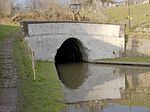Northwich Woodlands

Northwich Woodlands (formerly Northwich Community Woodlands) is an area of 373 hectares of publicly accessible countryside near Northwich in Cheshire, England. It comprises nine separate woods, country parks, lakes and parks, many of which are connected to each other via footpaths and other rights of way. Much of the land was formerly industrial and used for mining salt and manufacturing chemicals. The extraction of salt caused subsidence leading to the formation of pools known as flashes. The land became derelict during the 20th century as the salt industry contracted. Much of the area has now been reclaimed for the purposes of conservation and recreation and forms part of the Mersey Forest initiative.
Excerpt from the Wikipedia article Northwich Woodlands (License: CC BY-SA 3.0, Authors, Images).Northwich Woodlands
Oakwood Lane,
Geographical coordinates (GPS) Address Nearby Places Show on map
Geographical coordinates (GPS)
| Latitude | Longitude |
|---|---|
| N 53.264 ° | E -2.555 ° |
Address
Oakwood Lane
Oakwood Lane
CW8 4HG
England, United Kingdom
Open on Google Maps






